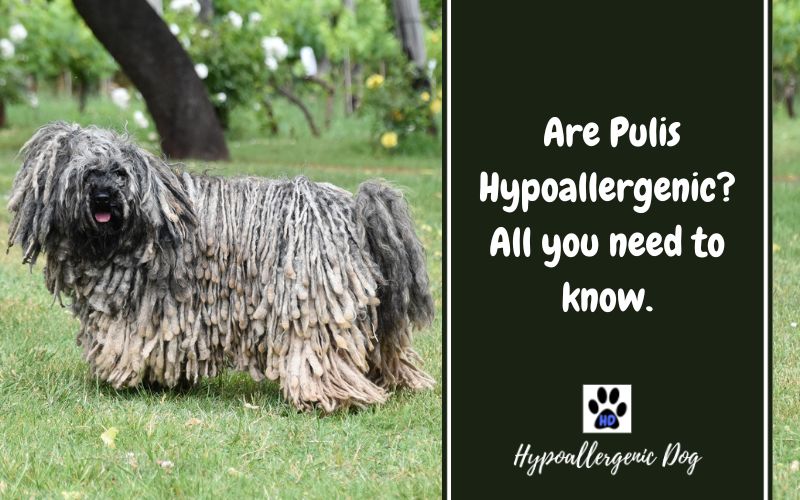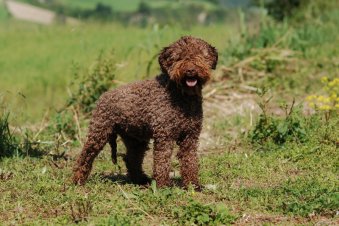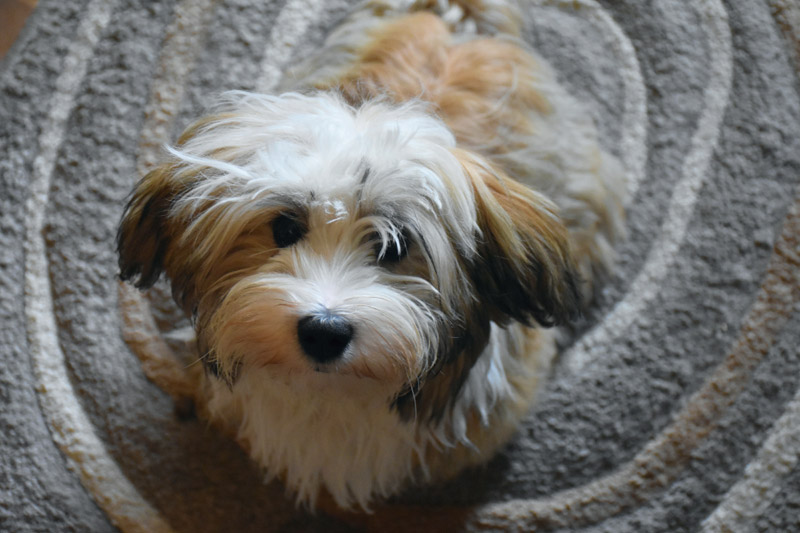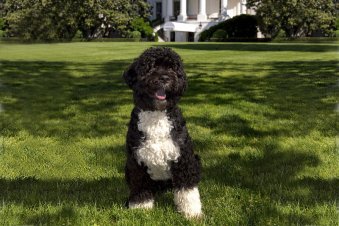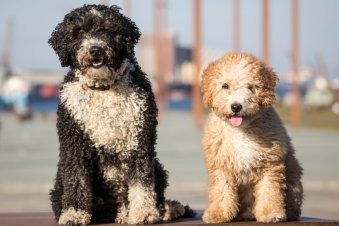Are Pulis Hypoallergenic?
Yes! The Puli is a medium-sized hypoallergenic dog breed that hardly sheds or drools.
Tribesmen from Magyar brought Pulik (the plural of Puli) to Hungary about 1,100 years ago. Soon they were revered for their excellent herding abilities. The preference was to use the black dogs of the breed so that they were easier to spot amongst sheep. Soon, owning a Puli which is considered a native to Hungary, became a source of pride. The Puli is a hypoallergenic dog with a coat that rarely sheds to the ground. Instead, the hair is trapped in the long coat and becomes part of the “dreadlocks,” with very little fallout, if any at all. This breed is lovable, smart, fun-loving, and very protective of their owners.
For a quick summary of the Puli skip to our Puli dog breed summary further down the page.
Are Pulis Hypoallergenic Dogs? Contents
Puli Quick Facts
About the Puli Breed
Puli Temperament
Puli Training and Exercise
Puli Grooming and Care
Puli Health
Conclusion
Puli FAQ
Puli Facts Summary
Puli Quick Facts

The coat of the Puli breed becomes corded, usually after the dog turns a year old, and takes about four years to reach its full length. They do not shed very much which makes them a hypoallergenic breed of dog. Any hairs that do happen to break off get trapped in the undercoat and fuse to the overcoat as the hair grows. Oftentimes, this gives the appearance of doggy “dreadlocks,” which is a very unique look for a dog indeed. Before it takes on a corded look, the overcoat of a Puli puppy is quite fluffy. Once the coat starts the transformation to its dreadlocked state, the fluffy undercoat fuses to the corded outer coat to become a felt-like texture. This breed’s coat can be self-cording, but most need a human’s help in order to be tamed properly.
Similar Dog Breeds To Puli
Puli Temperament
Puli dogs make amazing watchdogs as they are suspicious of strangers. The dogs of this breed are very affectionate, fun-loving, hard workers, athletic and intelligent. At times, they may try to “herd” you or your children by nipping at your heels, as is their natural instinct. When choosing from a litter of Pulik, it’s best to choose the puppy that isn’t cowering off by himself and also the one who isn’t beating up on his siblings. How the parents and the siblings behave will also give you a good indication as to how your Puli will act when it grows up.
Are you considering adopting a Puli?
- This breed absolutely loves exercise and is highly active. They can get stir crazy when bored.
- A Puli may act like it has springs in its legs and loves to jump fences.
- These dogs can be expensive to purchase, yet are extremely intelligent and loyal.
- The Puli requires a decent amount of maintenance when it has a long coat but has a very interesting look.
The Puli needs obedience training early to learn the “quiet” command because they tend to bark at strangers or people they aren’t used to. Obedience training is a must with this breed since they are leaders and will take over if you let them. Pulik need to learn manners early on or else their smarts and independent nature will get them into trouble. Have a firm, but kind hand to train a Puli and make certain to not be too repetitive or else he will soon grow bored. Keep it fun and short, fresh and lively to maintain his interest.
Exercise Needs
They are very active, but should not be stuck outside by themselves. Pulik can jump six-foot fences but should be given adequate outside time if you have the ability to do so. This breed has a strong desire to run and needs space to get rid of their energy. While they can adapt to small living spaces with ease, be forewarned that they will most likely run around like crazy to let off steam. They excel in herding and agility trials in competitions. Because they love to be the center of attention, trials fulfill a very basic need for them, plus the added benefit of exercise. While they are still young, don’t overdo it with exercise since their bones and plates are still forming. The dogs of this breed can jump very high fences and they should be monitored closely.
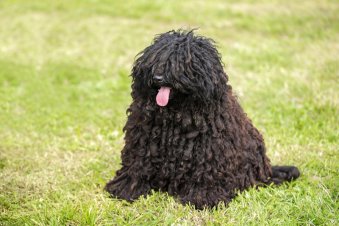
While the Puli is still a pup, brush his fluffy coat frequently to distribute natural oils on the skin. Although hypoallergenic, the full-grown corded coat can be high maintenance if you aren’t prepared. It’s best to seek professional advice on how best to care for your dog’s coat. It is recommended that this breed is not bathed often unless their coat gets dirty as it can take up to two days to air dry a Puli coat once wet. A blow dryer is not advised since this type of dog can get overheated and the skin can become irritated in the process. Keep the coat trimmed so that it doesn’t drag on the ground to avoid it getting unnecessarily dirty.
Teeth, Ears and Nails
A Puli’s teeth should be groomed daily or at the very least two to three times per week to prevent the build-up of tartar and bacteria. This will also prevent gum disease and bad breath. As needed, or at the very least once or twice a month, trim your dog’s nails to keep them from getting torn or other problems. Be careful with clipping as the toenails have blood vessels in them. A vet or groomer will be able to give pointers. Handling your dog’s paws on a frequent basis will get him used to being groomed as Pulik are touchy about their feet. If your veterinarian recommends a cleanser, you can use a cotton ball to clean the ears when you check them weekly. Be certain to notice if there is a bad odor or any redness. Do not insert anything into the ear canal. As you groom, also check for rashes, sores or other signs of infection on any part of the body.
Pulik are prone to certain health issues, but generally it is a rather healthy breed. This does not mean that all dogs of this breed will develop these issues, however, it will give you some things to watch out for. Progressive Renal Atrophy can be prevented by helping them maintain a proper weight through the correct diet and the right amount of exercise. Physical therapy and joint injections can help ease things along as well. Congenital Deafness cannot be prevented as it is genetically inherited. However, they can be trained using vibrating collars or hand signals if the deafness is severe. Degenerative Myelopathy also cannot be prevented as it is a genetic issue with the spinal cord that causes lameness. Carts and harnesses are available if the dog loses the ability to walk.
Weight loss and lifestyle changes along with joint injections can ease symptoms from Elbow Dysplasia. Some small dogs can be prone to inherit Patellar Luxation, but it can also be caused by an injury to the kneecap. Medication, a leg brace, and surgery are the only way to help with this issue. Diabetes is the main cause for Cataracts, which can only be fixed through surgical measures. Heart Disease is mainly genetic and can’t be prevented, but depending on the severity, medication or surgery may be necessary. Allergies cannot be prevented, but medication and keeping things clean can help ease symptoms. Hip Dysplasia can be prevented by proper diet and exercise to help control weight gain. They should get the proper health clearances before you take them home. Be sure that you receive your puppy from a respectable breeder.
Here are the tests Puli breeders should perform:
- Hip Evaluation
- Ophthalmologist Evaluation
- Patella Evaluation
- Degenerative Myelopathy DNA Test
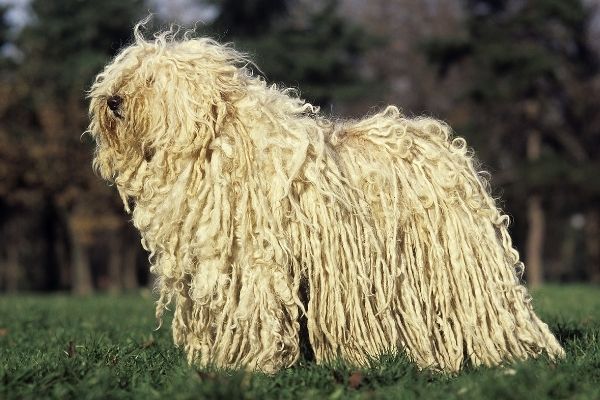
Degenerative Myelopathy
Pulik are very smart and carry themselves with a lot of confidence, which means they can at times get bored with repetitious things such as obedience training. The Puli breed loves to play, especially with toys and will most generally act like giant puppies. Housetraining can be a bit of an issue due to their stubborn streak unless you use a crate. If the Puli has a corded coat, it is recommended that you get the help of a professional to learn how to properly care for their hypoallergenic, yet difficult overcoat.

Is the Puli aggressive?
It depends. They are aggressive towards other animals and any humans they view as a threat against their family.
Are Pulik friendly?
Yes. They are playful and fun-loving, but don’t like strangers.
Is the Puli a pedigree?
Yes. This dog is a purebred as long as it comes from a valid breeder.
Is the Puli good with cats?
Yes. They even take to most cats.
Does the Puli shed?
Not much. Since their hair is so corded as an adult, they rarely shed.
Are Pulik hyper?
No. They are fun-loving and active, but not to the point of being hyper.
Are Pulik good with babies?
Yes. They are good with all children, but interactions with small ones should be monitored since they try to “herd” people at times.
Are Pulik good with kids?
Yes. Pulik love the kids in their family and are generally even more playful than the children themselves.
Do Pulik like water?
No, because their coat soaks up so much water. It weighs them down.
Can Pulik be left alone?
Not for long. They grow extremely attached to their owners and get destructive if left alone.
Do Pulik bark a lot?
Yes, Puli dogs are known for being a vocal breed.
Do Pulik howl?
Yes. They can be very noisy when something catches their attention or they’re trying to get yours.
Puli Facts Summary
| Breed | Puli |
| Other Names? | Pulik (plural for Puli), Hungarian Puli and the Hungarian Water Dog |
| Hypoallergenic? | Yes |
| Height | 16-17 inches (40.64-43.18 cm) |
| Weight | 25-35 pounds (11.34-15.88 kg) |
| Lifespan | 10-15 years |
| Temperament | Smart, loyal, fun-loving, affectionate, vocal, hard-working, athletic |
| Colours | Black, white, gray or brown |
| Coat – describe the coat | Wooly, dense, weather-proof, corded overcoat when mature, felt-like undercoat when mature |
| How much grooming? | Regular brushing until one year old. Then cords are managed by hand, dampened and twirled. Trim coat to keep from getting dirty. Bathing rarely as it is very time consuming. |
| How much shedding | ANSWER |
| Dander levels | Low dander level |
| Saliva – Do they Drool or Lick much? | Low |
| Energy levels | High. Very active and athletic. |
| How much exercise do they need? | A moderate amount of exercise, play, and mental stimulation daily. |
| Health problems | Hip Dysplasia, Cataracts, Progressive Renal Atrophy |
| Good for apartment? | Yes, but only if exercised regularly. They do tend to bark also. |
| Suitable for kids? | Yes, as long as well-socialized and properly trained. |
| How much do they bark? | Yes, as long as well-socialized and properly trained. |
| Can they be left alone? | Not for long. They get really attached to their people and become destructive if left alone for long. |
| Intelligent? | Yes, highly intelligent |
| Trainable? | It depends. They are independent and smart, so they can get bored easily with repetitive training. |
| How popular as a pet? | Rare |
| Any other important facts? | It can take up to two full days for their mature coat to air dry when wet. Using a blow dryer is not recommended. |

